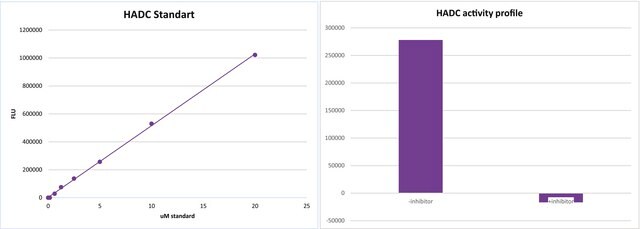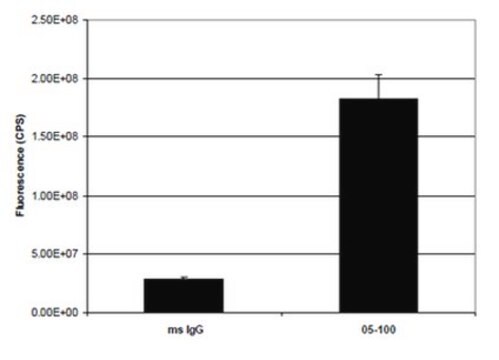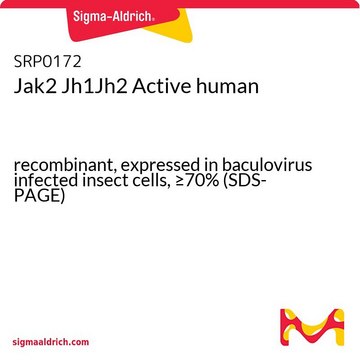H6287
Anti-Histone Deacetylase 1 (HDAC1) antibody, Mouse monoclonal
clone HDAC1-21, purified from hybridoma cell culture
Sinónimos:
Monoclonal Anti-Histone Deacetylase 1 (HDAC1) antibody produced in mouse
About This Item
Productos recomendados
biological source
mouse
conjugate
unconjugated
antibody form
purified immunoglobulin
antibody product type
primary antibodies
clone
HDAC1-21, monoclonal
form
buffered aqueous solution
mol wt
antigen ~65 kDa
species reactivity
mouse, human
concentration
~2 mg/mL
technique(s)
immunoprecipitation (IP): suitable
indirect ELISA: suitable
microarray: suitable
western blot: 2-4 μg/mL using total cell extracts of HeLa cells
isotype
IgG3
UniProt accession no.
shipped in
dry ice
storage temp.
−20°C
target post-translational modification
unmodified
Gene Information
human ... HDAC1(3065)
mouse ... Hdac1(433759)
Categorías relacionadas
General description
Application
- enzyme-linked immunosorbent assay (ELISA)
- immunoprecipitation
- immunoblotting
Biochem/physiol Actions
Physical form
Disclaimer
¿No encuentra el producto adecuado?
Pruebe nuestro Herramienta de selección de productos.
Storage Class
10 - Combustible liquids
Elija entre una de las versiones más recientes:
Certificados de análisis (COA)
¿No ve la versión correcta?
Si necesita una versión concreta, puede buscar un certificado específico por el número de lote.
¿Ya tiene este producto?
Encuentre la documentación para los productos que ha comprado recientemente en la Biblioteca de documentos.
Artículos
Huntington's disease (HD) is an autosomal dominant, late-onset neurodegenerative disorder characterized by a selective neuronal cell death in the cortex and striatum leading to cognitive dysfunction, motor impairment and behavioral changes.
Nuestro equipo de científicos tiene experiencia en todas las áreas de investigación: Ciencias de la vida, Ciencia de los materiales, Síntesis química, Cromatografía, Analítica y muchas otras.
Póngase en contacto con el Servicio técnico








